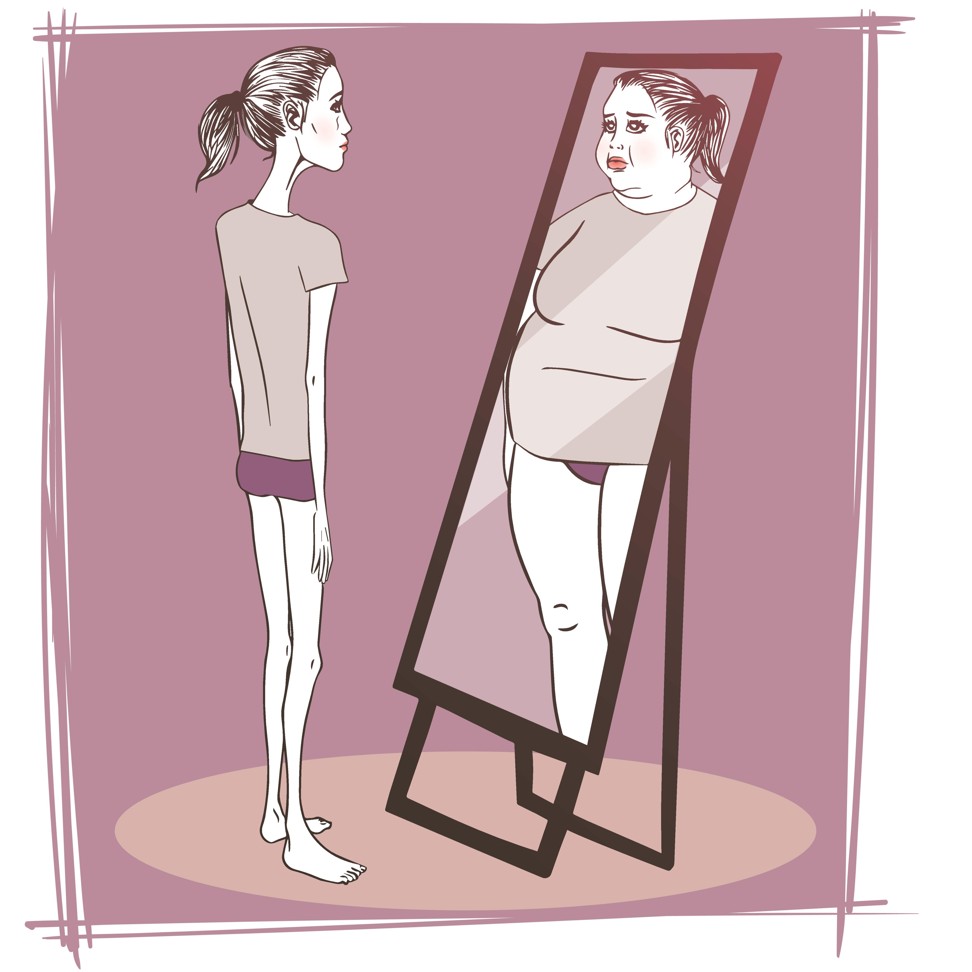Eating disorder definition
Eating disorders can occur in a variety of forms, from when we excrete food to when we ingest abnormal amounts. Needless to say that a shared obsession with food is present.
Global eating disorder prevalence increased from 3.4% to 7.8% between 2000 and 2018. Some overeat and become obese; others don’t eat enough and literally starve themselves. The third category overeats and purifies by vomiting food or using other methods to rid their body of excess calories.
There is often hyperfocus on body shape and weight. One of the common issues that all eating disorders have, in addition to a lack of control in eating habits, is that they can progress and cause severe, sometimes permanent, damage to mental and physical health.
That’s why it’s important to know how to recognize if you or someone you know is showing symptoms or signs of an eating disorder. Accordingly, you would contact a professional who will give you the appropriate diagnosis and treatment advice.
What is the classification of eating disorders, and what are the consequences?
Let’s come up with an answer together.
Today, two classification methods are used.
- The first method is the ICD-10 of the World Health Organization (WHO Classification of Mental Illness, tenth edition).
- The second method is the DSM-IV American Psychiatric Association (a guide to treating mentally conditioned eating disorders).
According to ICD-10, there are 6 eating disorders.
They belong to the group of behavioral syndromes associated with physiological disorders and somatic factors.
A behavioral syndrome is a set of behaviors related to certain habits, while a physiological disorder is a condition in which the disease leads to organ dysfunction. Somatic factors relate to our body and its functioning.
Six primary eating disorders:
- Anorexia nervosa
- Atypical Anorexia nervosa
- Bulimia nervosa
- Atypical Bulimia nervosa
- Excessive food intake combined with other psychological disorders
- Other eating disorders
DSM-IV offers us a somewhat more modest classification of categories, which are:
- Anorexia nervosa
- Bulimia nervosa
- Atypical eating disorder
Today we will concentrate on ICD-10 classification of eating disorders.
Anorexia nervosa
It most commonly occurs in adolescents and people over the age of twenty-five. It implies low body weight, which occurs as a consequence of the constant fight against hunger. There are usually two forms, depending on how weight is achieved and maintained:
- The restrictive type where diet is performed, i.e., starvation, often accompanied by excessive physical activity
- Purgative type or type with cleansing which, in addition to starvation, is characterized by occasional overeating and expulsion of food from the body, vomiting, and use of laxatives and diuretics
It is important to emphasize that the cause of anorexia is not loss of appetite, but excessive food intake, unreasonable fear of gaining weight, and obsessive starvation. This happens even when weight loss threatens health and life.
People who suffer from this disorder usually do not admit that something is wrong, so they react angrily and violently to remarks and suggestions. They are also more prone to mood swings, depression, have poor memory and concentration, are slowed down, and women often lose their menstrual cycle.
Anorexia itself can cause many other diseases and can even lead to death.

Bulimia nervosa
Bulimia implies a pathological need for food and uncontrolled overeating. This disorder follows a distorted image of a person’s body. Those who suffer from bulimia nervosa punish themselves by starvation and are prone to violent vomiting to reduce food ingested into their bodies, i.e., doing “cleansing.” Still, in reality, they only punish their bodies with it.
People who suffer from bulimia and anorexia have an obsessive fear of gaining weight, so soon after a meal, they have a feeling of guilt, which they resolve by vomiting. These people eat everything they can get their hands on, regardless of the quality of the food. Unlike people who suffer from anorexia, they are not thin but rather have average body weight.
Signs and symptoms may include:
- preoccupation with one’s figure and body weight;
- recurrence of episodes of consuming abnormally large amounts of food;
- feeling out of control after overeating – as if you can’t stop eating, or you can’t control what you eat;
- self-induced vomiting or excessive exercise with a goal not to gain weight;
- usage of laxatives, diuretics, or enemas, after meals, when not needed;
- fasting, limiting calories, or avoiding certain foods between drinks;
- excessive use of dietary supplements or herbal products for weight loss;
- weekly “purification.”
The severity of bulimia is determined by the number of times you “purify” yourself a week, usually at least once a week for at least 3 months.
Atypical anorexia nervosa and atypical bulimia nervosa
Atypical types can control food intake more and eat healthier. They are also mentally ill, but not as much as typical patients; therefore, they do not lose weight drastically. After a while, the illness manifests itself more plainly.

Obsessive overeating
Obsessive overeating is an eating disorder characterized by frequent overeating episodes accompanied by adverse psychological and social problems without cleansing episodes.
Compulsive overeating does not trigger hunger – you simply eat out of control.
This eating disorder shows similar behaviors to bulimia but in a milder form. As much as there are similarities, there are also differences, so obsessive overeating needs to be viewed separately from anorexia and bulimia. While people with a healthy weight can sometimes overextend themselves at the table, the constant habit of consuming large amounts of food in a short period can eventually lead to weight gain and obesity.
Overeating brings food with a high content of fat, sugar, salt but low levels of vitamins and minerals because this kind of food gives the body the greatest “emotional reward.”
As many as 70% of people with this eating disorder can be obese. Consequently, high blood pressure, cardiovascular diseases, type 2 diabetes, high cholesterol levels, musculoskeletal problems, and snoring during sleep can occur.
About 1% of the general population has a problem with overeating, so this is a common eating disorder in adults. In developed western countries, this eating disorder is up to 3 times more common. If we look by gender, obsessive overeating is more common in women than in men.
Characteristics of obsessive overeating
- Eating is much faster than usual and often in a short time interval,
- A person eats until they feel an unpleasant feeling that they are (too) full,
- Eating large amounts of food even though there is no hunger present,
- The person feels a loss of control over the amount and/or type of food he or she eats,
- Overeating is planned in advance, so the person plans and buys food in advance and chooses the time of day or night when to eat,
- Secret eating because of the shame about the amount of food consumed,
- A person can’t remember what they ate after an episode of overeating,
- Feelings of guilt, shame, or remorse after overeating.
Unlike bulimia, obsessive overeating is not accompanied by activities aimed at preventing weight gain. No vomiting, use of laxatives, enemas, or excessive exercise.
This disorder is more characterized by putting food in oneself than worrying about what overeating does to the body.
Orthorexia
Orthorexia is one of the four most common eating disorders. It is an excessive obsession with a healthy diet and is a special type of disorder. Those who suffer from orthorexia are extremely concerned about the quality of the food they eat, so they limit their diet according to their personal opinion about which foods are actually healthy.
Often, weight loss, anxiety, and reduced interest in participating in various social activities can occur. Dietary restrictions worsen over time and can lead to the elimination of whole food groups.
How will an eating disorder affect your life?
In addition to disrupting your daily activities, eating disorders would also affect your emotional and mental health. You could feel anxious about the number of calories you have ingested or are ashamed of your weight. You could begin to isolate yourself from family and friends who are worried about you, which is especially bad because it can lead to anxiety and depression.

The physical impact of eating disorders is not at all naive. Over time, eating disorders can damage your digestive tract, skin, bones, and teeth, as well as the functioning of various other organs, including the heart. Eating disorders have the highest mortality rate among mental health conditions, especially anorexia. In fact, the risk of mortality is 18 times higher than in peers of the same age, so it is vital to recognize the symptoms in time and react accordingly.
How to recognize an eating disorder?
If the answer to any of these questions is yes, you should seek professional advice or assistance.
- Do you feel guilty after eating?
- Do you start each morning with a new diet?
- Are you starving?
- Do you measure yourself several times a day?
- Do you feel depressed and isolated?
- Are you exercising too much?
- Do you avoid talking about food?
- Are you ashamed of your appearance?
- Do you constantly think about what you will eat next?
- Do you vomit or take laxatives too often?
Each of these disorders can be cured with proper diet, training, and psychotherapy. The family, partners, and friends have the most critical role in that and should be your most significant support. You can buy groceries together and cook, train. Keeping a diary is also a great thing, so you can control your habits and notice your progress.
And always remember that you are the most beautiful and the best as you are!
Image credits Feature image: Jessica Ticozzelli from Pexels.
All images: Min An from Pexels, Polina Tanklievitch from Pexels.


0 Comments